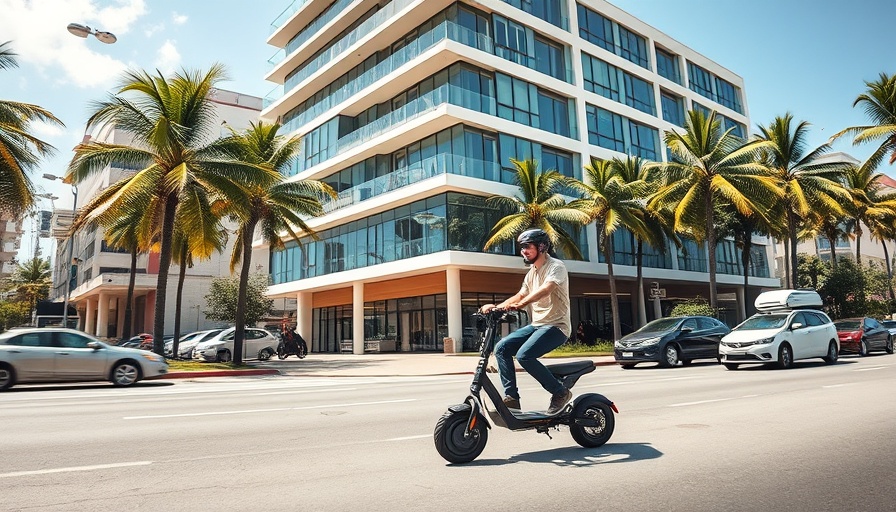
Can Thoughtful Urban Design Help Transform 16th and Mission in San Francisco?
In the heart of San Francisco, 16th and Mission has evolved into a focal point for numerous urban planning discussions. Al Casciato, a former police captain with deep ties to the Mission District, recently highlighted a significant oversight in the area's development. He attributes a major urban planning misstep to the decisions made in the 1970s that left the BART station deprived of housing and retail space, an idea supported by famed urbanist Jane Jacobs.
The Importance of 'Eyes on the Street'
Jacobs famously argued that vibrant and safe neighborhoods require residents and businesses that provide "eyes on the street." In this context, Casciato’s viewpoint brings attention to the pressing need for community engagement and safety in urban design. He notes, "There must be eyes upon the street, eyes belonging to those we might call the natural proprietors of the street." This rule recognizes that a populated area naturally discourages undesirable activities, creating a sense of safety for the entire community.
Interestingly, one of the latest developments in the area, La Fénix, a public housing complex located at 1950 Mission St., contradicts this theory. Despite accommodating around 400 tenants and three active nonprofits, the surrounding environment remains marred by open drug use and unregulated vending activity.
Sophia Thibodeaux, a La Fénix resident, describes navigating this precarious landscape, remarking on the stark contrast between the garden-like courtyard of her home and the troubling realities of Mission Street. “This is a sidewalk, not a standwalk,” she admonishes those loitering near the building.
From an Urban Utopia to Aspects of Urban Decay
Casciato's visit to the site raised questions about urban visibility and design. He pointed out that nearly all ground-floor windows of La Fénix are tinted, an architectural choice that prevents passersby from perceiving any activity inside. In Casciato's view, this creates the illusion of vacancy, attracting those looking for secluded spots for drug-related activities.
The design includes a large recessed area at the south entrance that, while perhaps aesthetically pleasing, has inadvertently become a haven for illicit behavior. This duality reflects a broader trend in urban design, where beautiful architecture does not necessarily equate to improved community safety or engagement.
Can Aesthetic Design Solve Urban Challenges?
La Fénix’s situation prompts the inquiry: can architecture alone remedy the challenges faced by neighborhoods like 16th and Mission? The answer is layered and requires deep engagement with community input. City council initiatives and local crime reports indicate that merely building attractive structures does not address the root causes of urban decay.
With San Francisco's pressing public safety issues, evolving political climates, and community needs, there is a call for innovative urban solutions. Collaborative community-driven initiatives may better serve neighborhoods than handsome but isolated developments.
A Vision for a Safer Community
What could the future look like if San Francisco prioritized functional urban design? Integrated developments promoting both aesthetics and community safety might yield areas where residents feel secure and engaged. Incorporating holistic planning that emphasizes accessibility to services, community spaces, and diverse economic activities is essential to building vibrant neighborhoods.
Future predictions focus on the potential for transforming spaces through thoughtful planning that engages the public and addresses their needs. As the San Francisco city council deliberates on related policy matters, a renewed commitment to community-driven designs could guide initiatives to restore safety and vibrancy to streets like those around 16th and Mission.
Call to Action: Engage With Your Community
As residents and stakeholders in San Francisco, your voice matters. Engage with local councils and advocate for designs that prioritize community safety and vibrancy. By participating in discussions around urban development and safety, you can help shape the future of your neighborhoods.
In engaging discussions around 16th and Mission, we recognize the intersection of architecture, urban planning, and community safety. It's a pressing reminder that designs should not only be visually appealing but also create safe, inclusive spaces. If you want to make an impact, it's time to connect with your community and ensure that urban development truly reflects the needs of residents.
 Add Row
Add Row  Add
Add 




 Add Row
Add Row  Add
Add 

Write A Comment